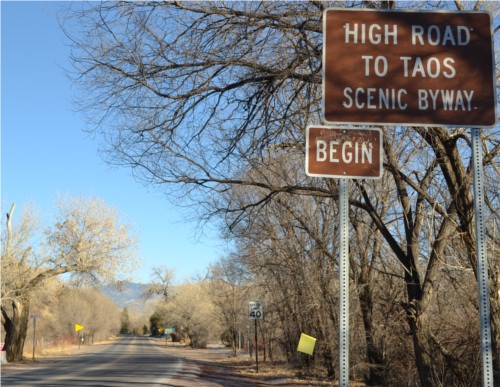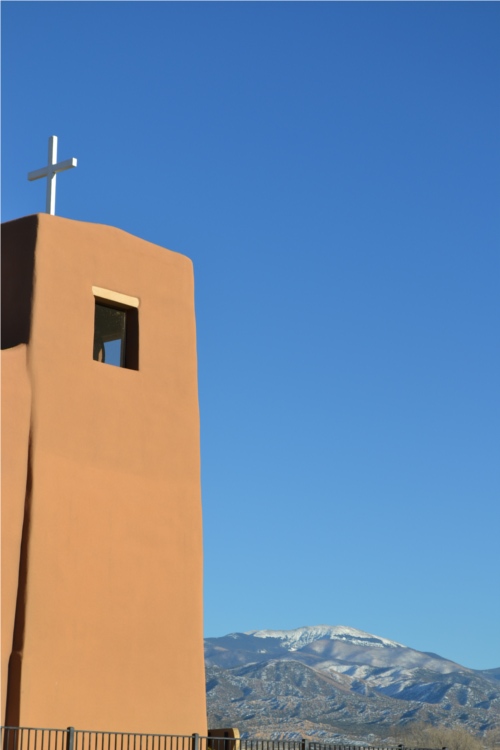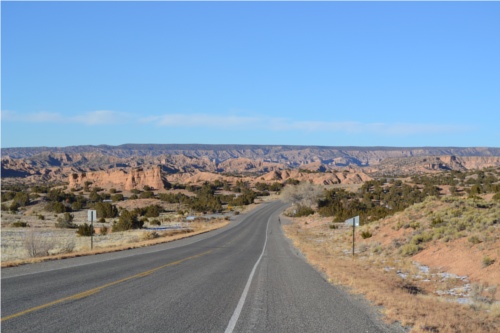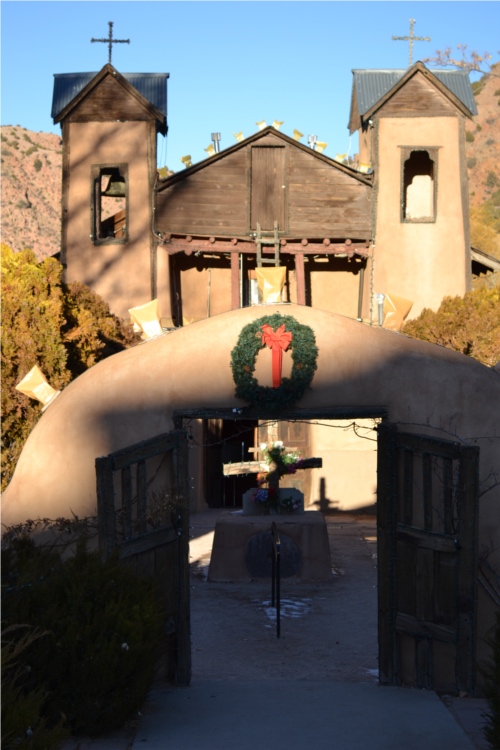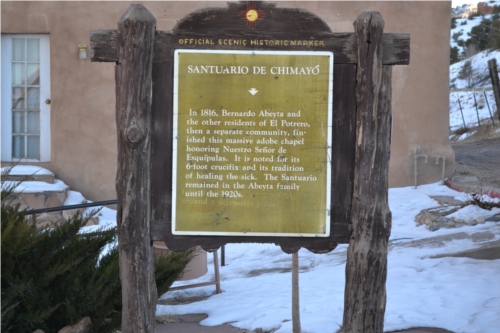Taking the High Road to Taos is a beautiful journey that can spin by in just under two hours. Or you can give yourself the luxury of taking 4-5 hours, all day, or even multiple days and really gain insight into northern New Mexico, its unique history, culture and people. I’ve decided to make this a 3 maybe 4 part journey and try to show you just a few of the beautiful sights that await you. If you like driving the open road and being surrounded by mountain ranges, fascinating light changes, tiny historic Spanish land grant villages, and art communities, then this trip is for you. Even in the winter the scenery is enchanting.
Only twenty minutes north of Santa Fe’s downtown along Hwy 84/ 285 is the turn off for Route 503 to Nambe and the Scenic High Road begins. Cruising through Nambe you see the Sacred Heart Catholic Church gazing toward the Sangre de Cristo Mountains.
The road continues to wind through Nambe to the turn for route 93 toward Chimayó. At this point, you begin to feel you’re in one of those car commercials where there’s only you for miles and nothing but beautiful red rock formations, and mountain vistas. But you resist the urge to rev your engine and speed up. Not just because you don’t want a speeding ticket, but because you want to savor the moment as you head down into the valley toward the historic village of Chimayó.
Spanish settlers founded Chimayó in the late 17th century. It was ideally situated with the Santa Cruz River to nourish the fertile valley soils, and the surrounding foothills to offer protection from invaders. Farming, raising live stock and wool weaving were the means of survival and trade that made the area famous. The red chile is especially a point of local pride and enjoyed by most visitors looking for authentic northern New Mexican cuisine.
And of course the famous el Santuario de Chimayó sits like a jewel in the fading light of the winter sun.
Originally named el Santuario de Nuestro Señor de Esquipulas, it is now more commonly known as el Santuario de Chimayó. About 200 years ago, many believe miraculous healings occurred at the site where a 6 foot wooden cross was unearthed. Chimayó is often referred to as the “Lourdes of the Southwest.” The legend recalls, on Good Friday, early in the 1800s, a villager found a wooden cross buried in the earth on the site where the santuario now sits. He brought the cross to his local church, but the cross disappeared, only to be found again, buried in the same original spot at Chimayó. The villagers were in awe of this “miracle” and believed it to be a message from God that a church should be built on that spot.
El Santuario de Chimayo was completed in circa 1815. Every year since, Hispanics, Native Americans and Anglos have come here on pilgrimage during Easter and especially on Good Friday. Some walk from nearby villages, and many walk from Santa Fe. To this day the earth is believed to be miraculous, and many prilgrims will take small packets of earth from the sacred spot inside the church so that they may have some of the healing powers with them. The walls of the ante room are lined with walking sticks, crutches and messages from hundreds of prilgrims who have felt the benefits of the healing powers of El Santuario.
Even though there is so much more to discover here, the daylight is disappearing.
To be continued in part 2…
Thank you for reading my blog. If you’d like to receive my posts via email, please send your request to me at Maria@santafeselection.com.

